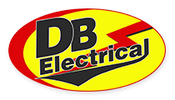Riding the trails on a sled is all about exhilaration. But nothing deflates the fun faster than a malfunctioning electrical system. These mission critical components make the difference between an adrenaline-rush day or a sad time on the sidelines. To ensure your sled is ready to go, make sure these electrical components are in prime operating condition.
1) Starters
As with all components, starters will wear out over time. But complete failure will rarely be immediate. Starters will give off a few signs that they are in decline, but that’s tricky because many of these signs are associated with other components, too. Warning signs include sluggish starting, erratic starting, grinding noises or lights flickering. If you experience any of these signs, get your snowmobile inspected sooner rather than later. Inevitably, the problem will get worse, leading to an inability to start anymore. Repairs can range from replacing the entire starter to refurbishing it with a starter repair kit.
2) Alternators
Alternators convert energy to keep the battery charged and accessories operating. When the alternator fails, the battery will lose its charge and the fun on a sled will grind to a halt. You don’t want that to happen far from home on a winter’s night. If the battery seems is weak or erratic in starting your snowmobile, the cause might be the alternator is losing its capacity to recharge it. Other warning signs include lights that periodically dim, burning odors, and grinding or whining sounds. If you’re not sure if the problem is the battery, alternator or something else, try using a voltmeter, which can identify problems originating from the battery or alternator.
3) Stator Coils
A stator coil acts as an electrical power generator like an alternator. Depending on your model of snowmobile, you may have either a stator coil or an alternator. Like an alternator, when a stator coil fails, it loses its capacity to keep the battery charged. Unlike an externally mounted alternator, you’ll find the stator coil located inside the engine. Signs of a failing stator coil include hard starts, loss of battery power on the trail and flickering lights.
4) Solenoid Relays
Solenoid relays deliver an electrical current to the starter to get the engine going. So how do you know if the solenoid relay is the likely problem? Listen for a clicking sound coming from the solenoid relay when the snowmobile is turned on. You’ll hear a noticeable sound if the solenoid is good, and a weak sound or silence if the solenoid is bad. With all of the sounds that come from an engine, you’ll need someone else to start the snowmobile while you concentrate on the solenoid relay. A multimeter is a tool you may use to test your solenoid.
5) Voltage Regulators
Voltage regulators control the output of voltage to prevent damage to the wiring, battery and other electrical accessories. When the voltage regulator fails, voltage levels between the alternator and battery may be erratic. Complete failure of the voltage regulator can mean a total break between the alternator and battery. Lights that fluctuate from bright to dim are an indicator of a failing voltage regulator. Multimeters are useful for testing voltage regulators.
Snowmobile Electrical Systems
A well-operating electrical system in your sled makes the difference between hitting the trails or sitting home. Maybe even more important, the mission-critical components in your snowmobile will determine whether you get home on time or need a repair out there somewhere.
Related Articles
5 Reasons Why Summer Heat is Hard on Vehicles
Sourcing Industrial Machinery Starters and Alternators
5 Top Tips to Prepare Your Vehicle Electrical Systems
What Makes Marine Starters and Alternators Different


